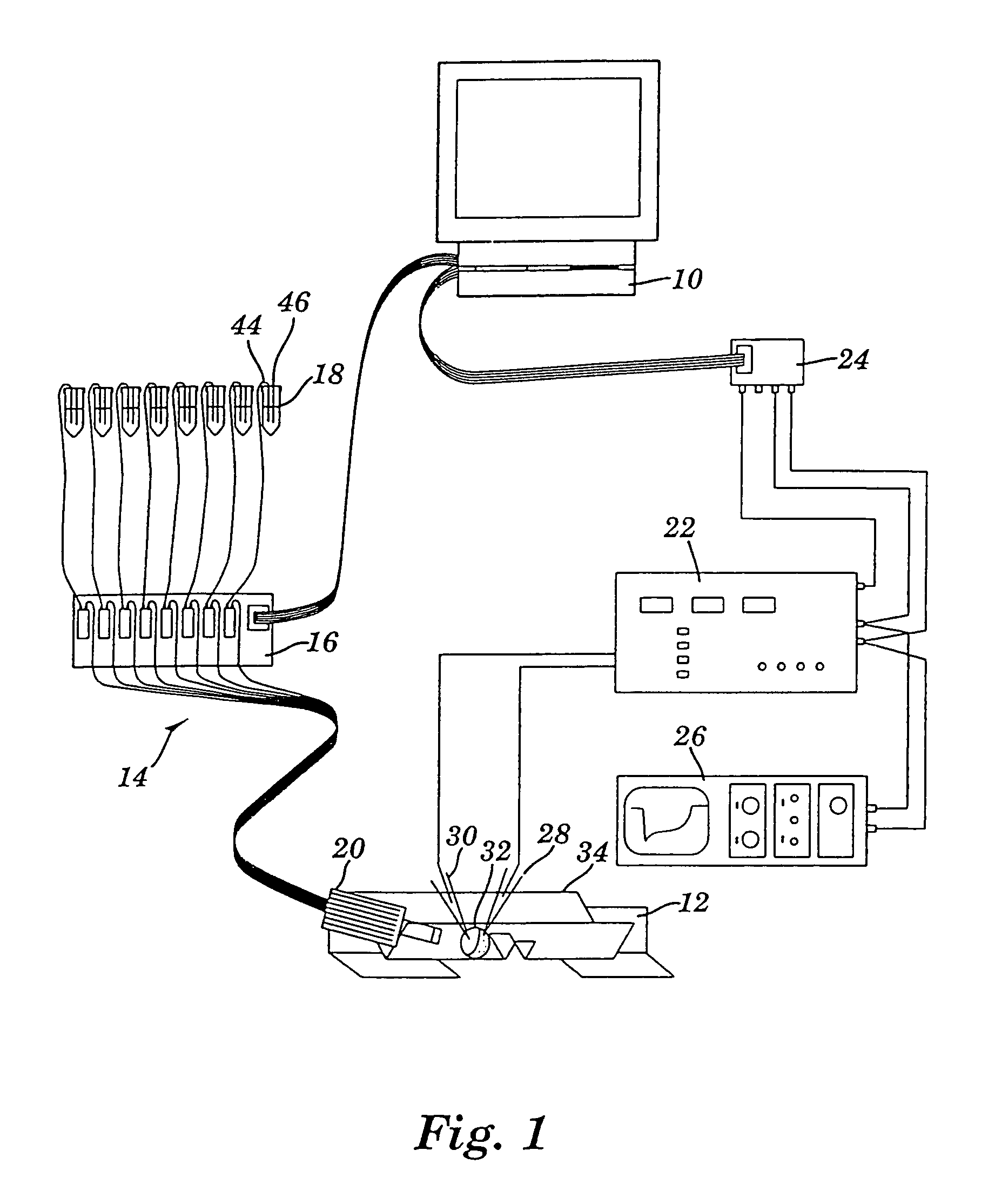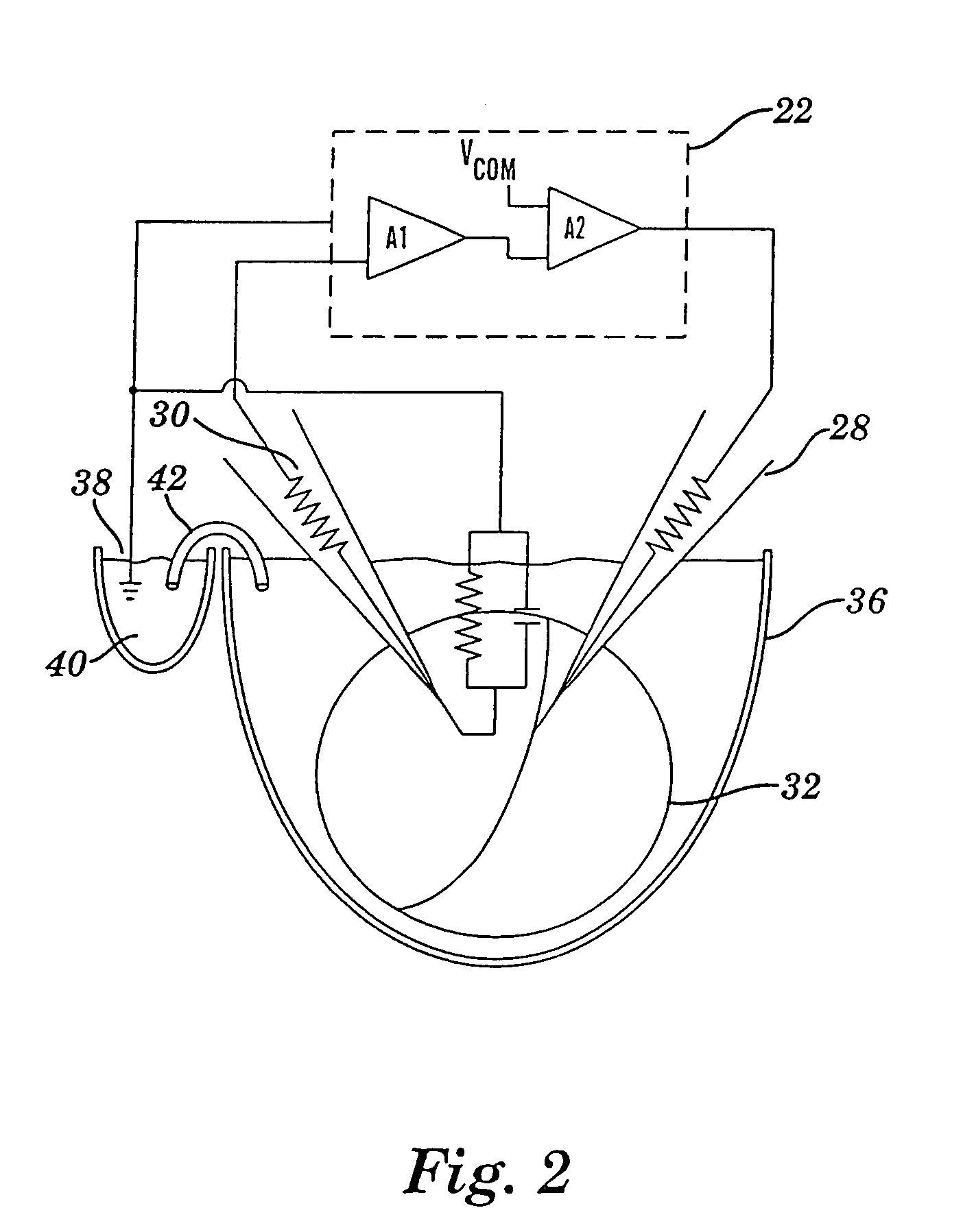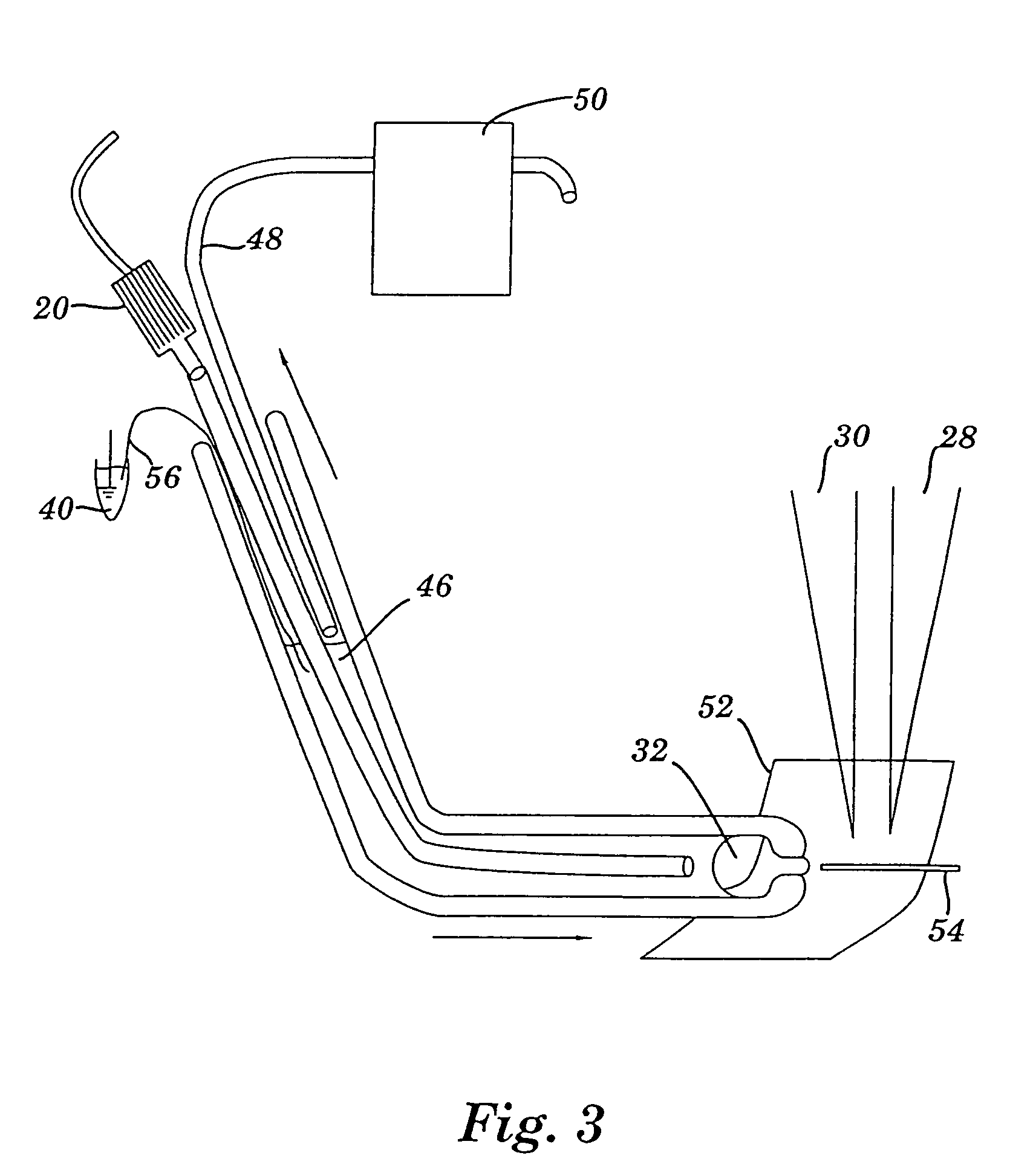Apparatus for detecting and recording cellular responses
a technology of cellular responses and apparatus, applied in the field of apparatus for detecting and recording cellular responses, can solve the problems of less than optimal reproducibility and reliability, additional problems, and difficulty in achieving a highly reproducible and reliable assay or quantitative analysis of electrophysiological responses by conventional manual perfusion and membrane potential measurement techniques
- Summary
- Abstract
- Description
- Claims
- Application Information
AI Technical Summary
Benefits of technology
Problems solved by technology
Method used
Image
Examples
example 1
Oocyte Isolation
[0111]Female, oocyte positive Xenopus laevis frogs, purchased from Nasco, Inc. were kept on an about 12 hour light / about 12 hour dark cycle. Frogs were maintained on a diet of chopped calf liver fed about every three days. Prior to surgery, frogs were anesthetized in a solution containing about 0.15% Tricaine for about 30 minutes. Ovarian sections were removed through a lateral abdominal incision, after which the incision was sutured with about 4 to about 5 stitches and the animal allowed to recover in isolation for about 3 hours to about 4 hours. Ovarian lobules containing follicular oocytes were immediately placed in calcium-free ND96 solution (96 mM NaCl, 1 mM MgCl2, 2 mM KCl, 50 mM Hepes, 2.5 mM pyruvate) and cut into groups of about 10 to about 20 oocytes. Following a treatment with collagenase (Sigma, type II, 2 mg / ml) at about 2 mg / ml for about 2 hours at room temperature, individual oocytes were obtained free of their follicular layer. Selected Dumont stage V...
example 2
RNA Preparation
[0112]RNA was prepared for injection into oocytes by extraction of mRNA from brain tissue and by synthesis using in vitro transcription of linearized DNA templates encoding recombinant receptor subunits.
[0113]The extraction technique of RNA preparation uses brain mRNA from chick embryos of about 19 day old as starting material. Extraction was performed using the Dynabeads Oligo-dT(25) isolation kit (Dynal, Inc.) which utilizes magnetic beads having an attached poly-thymidine oligomer to allow magnetic separation of poly(A)+ RNA from cell homogenates.
[0114]In vitro transcription was performed using plasmids containing the GluR3 (flop) and GluR6 cDNA as starting material. Plasmids were linearized with restriction endonuclease XhoI (GluR3) or XbaI (GluR6) prior to in vitro transcription with T3 RNA polymerase using a commercially available kit (Message Machine; Ambion, Inc.; Austin, Tex.).
example 3
[0115]About 3 days to about 5 days after RNA injection, electrophysiological recordings were carried out using an Axoclamp-2A voltage clamp amplifier (Axon Instruments, Inc.). Experiments were performed in two-electrode voltage clamp mode using two intracellular microelectrodes of about 1 to about 3 mega-ohm resistance filled with a solution of about 3M KCl. A close-up view of an oocyte under impalement in voltage-clamp mode is shown in FIG. 7.
[0116]Oocytes were usually clamped at a holding potential of about −60 mV and stepped to about −100 mV during agent application. GluR6 injected oocytes were treated for about 10 minutes with a solution of about 10 μg / ml concanavalin A to prevent fast desensitization of kainate responses.
PUM
| Property | Measurement | Unit |
|---|---|---|
| rise time | aaaaa | aaaaa |
| rise time | aaaaa | aaaaa |
| rise time | aaaaa | aaaaa |
Abstract
Description
Claims
Application Information
 Login to View More
Login to View More - R&D
- Intellectual Property
- Life Sciences
- Materials
- Tech Scout
- Unparalleled Data Quality
- Higher Quality Content
- 60% Fewer Hallucinations
Browse by: Latest US Patents, China's latest patents, Technical Efficacy Thesaurus, Application Domain, Technology Topic, Popular Technical Reports.
© 2025 PatSnap. All rights reserved.Legal|Privacy policy|Modern Slavery Act Transparency Statement|Sitemap|About US| Contact US: help@patsnap.com



